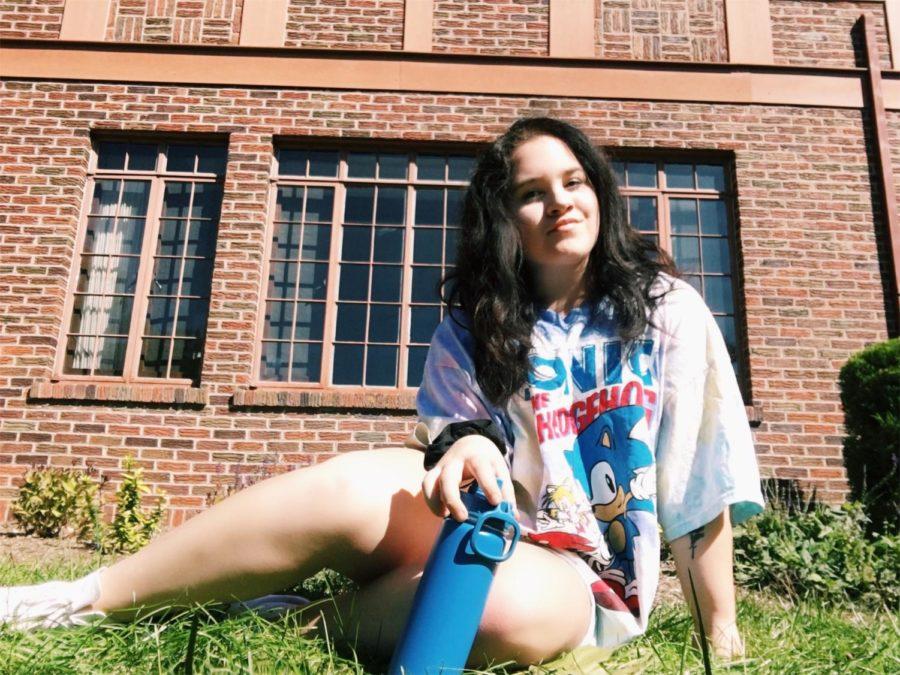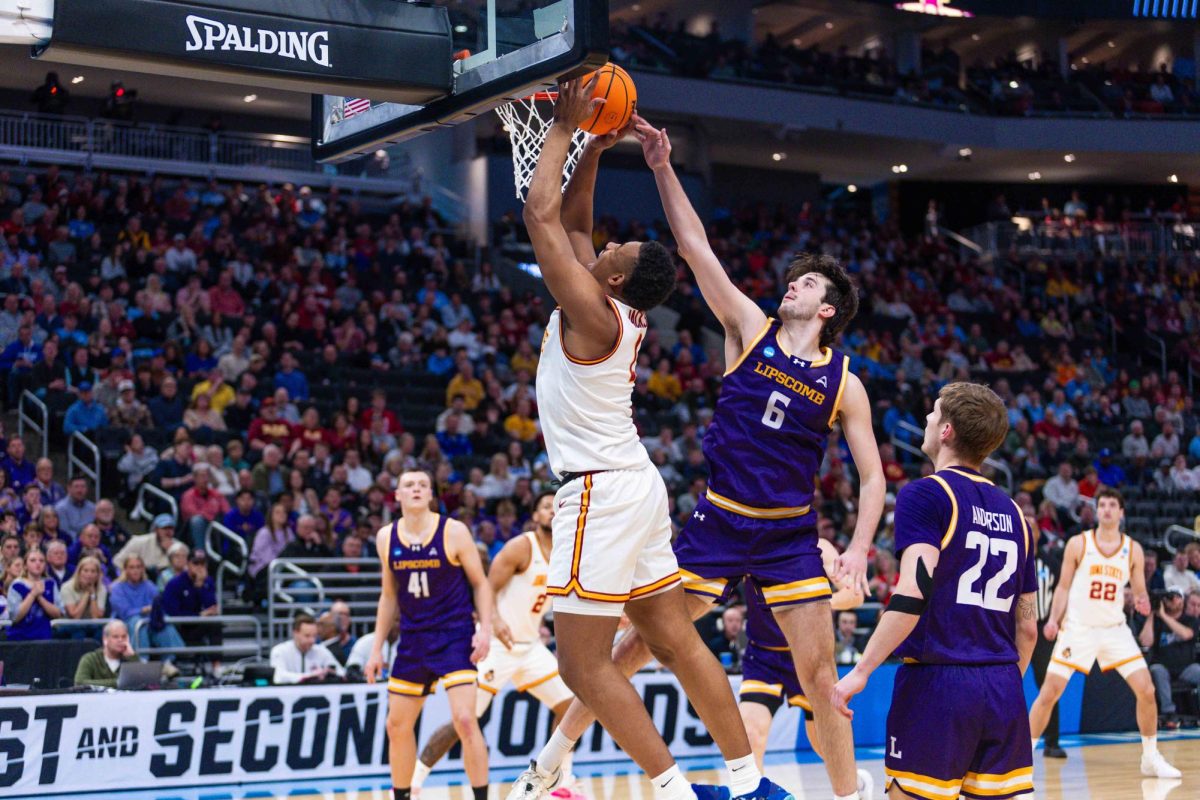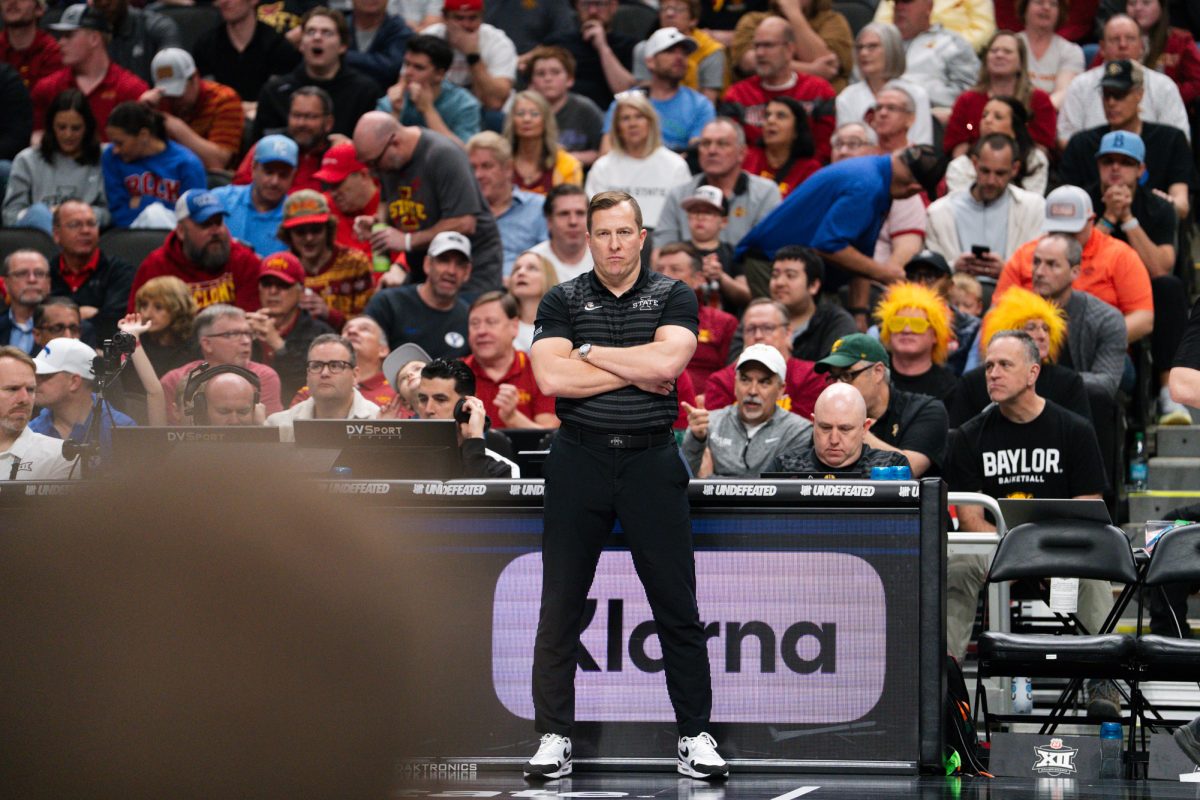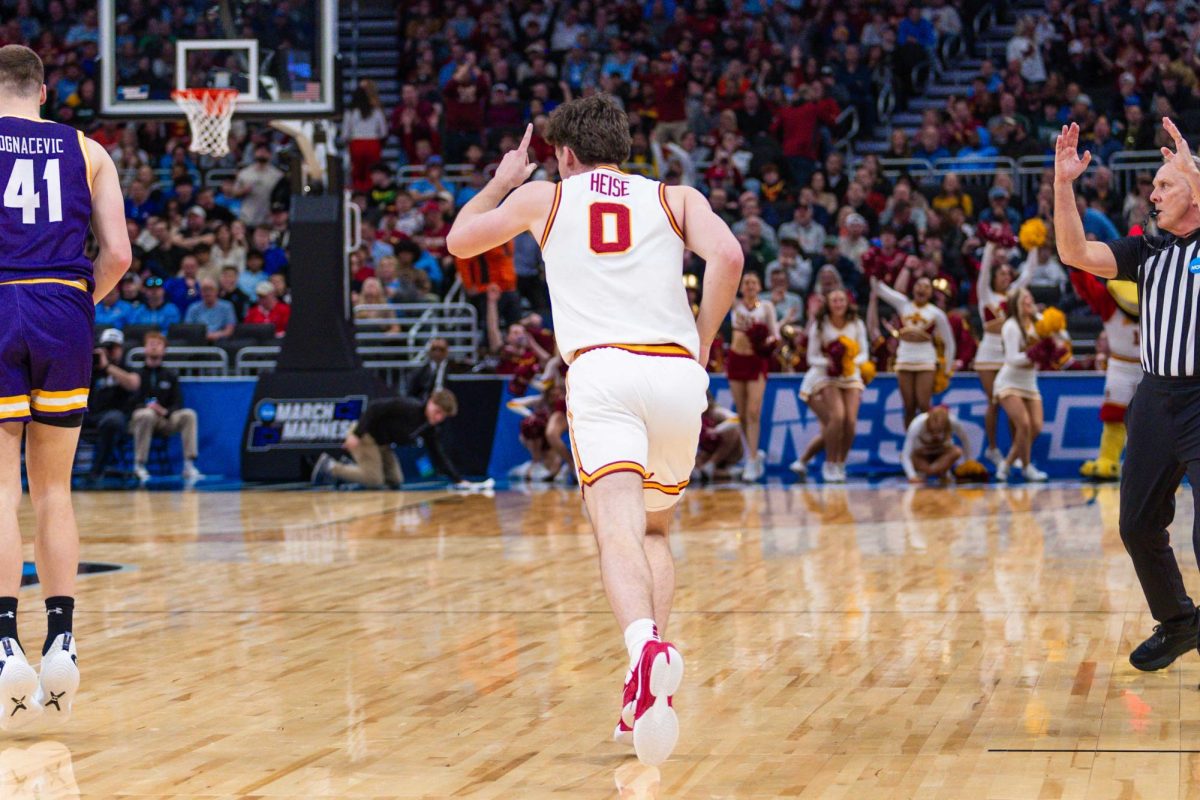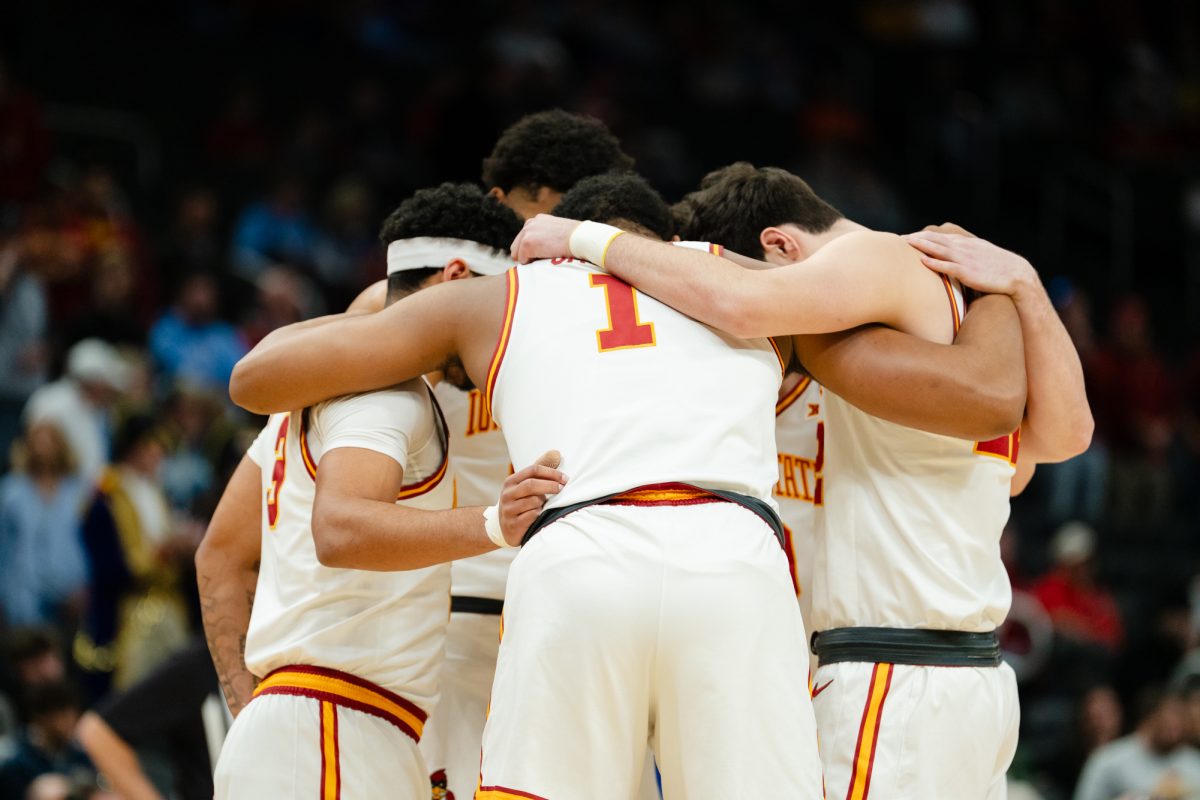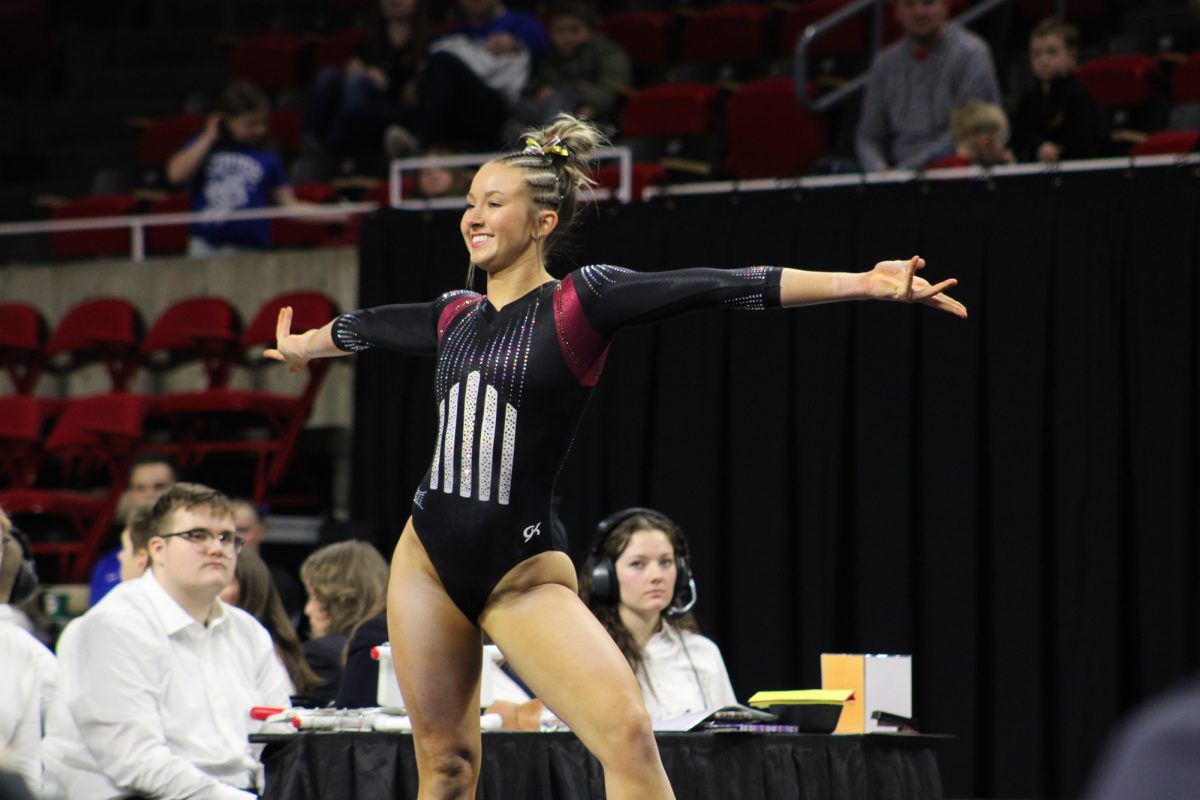Debunking “VSCO girls”
Hannah Scott/ Iowa State Daily
“VSCO Girls” typically wear large, baggy t-shirts and don a Hydro Flask. Picture edited with preset C1 on VSCO.
September 26, 2019
“VSCO Girls”: it’s a term that has circulated the internet for some time now, and even if you’ve never heard it before, you probably know what it looks like.
Girls on Instagram wearing big baggy T-Shirts with Birkenstocks, Hydro Flasks and touting scrunchies as though it’s once again the 1990s. Their feeds are filled with pictures of them penny boarding, drinking Starbucks and chilling out in grassy fields or beautiful beaches.
But behind all the perfection, the more interesting question stands: where do these trends come from and why do they stick? From “E-Girls” to VSCO, what is it about the aesthetic that attracts so many?
With a style described as “preppy with a casual beach inspired flair,” by NBC News, “VSCO Girls” have taken social media by storm.
VSCO is primarily a photo editing app, where users can upload pictures and edit them using provide presets, with more presets are available for purchase. Users can follow their friends and other accounts on VSCO and can share, favorite and repost pictures.
Beginning on the VSCO app, “VSCO Girl” was simply the idea of having an aesthetic feed. However, it soon began to transfer to other mediums including TikTok and Instagram, allowing more individuals to catch onto the trend before anyone realized the idea had exploded. More and more girls began putting themselves into the category.
“It is the total ‘it’ of the younger generation,” said Sophia Strobach, a sophomore in apparel, merchandising and design. “Every generation has that one girl that everyone wants to be, but it is definitely more limiting to the younger generation as there is starting to become a lack of individuality.”
When talking to a few younger individuals about these upcoming trends, many of them had interesting takes on the possible effects it may have on those participating and the mentality of brand names within the “VSCO Girl” ideal.
“By having brand name items, many people think it makes you look better, also it may make it look like you have more money and money is a big thing for status these days,” said Caitlynn Slaymaker a sophomore in apparel, merchandising and design.
Many would reasonably wonder why internet fads like this seem to take hold of so many so quickly. Kelly Reddy-Best, assistant professor in the department of apparel, merchandising and design, states identity has always been an integral part of young individuals ways of living, it just may not have been as identifiable as it is today.
“The way that social media works and the way that influencers have such a power over everything, people will be drawn to their certain style or aesthetic,” Reddy-Best said on why young individuals often become so attached to a certain internet trends or ideals.
Perhaps the most essential fact to the whole ordeal is when you are young, physical appearance is one of the most controllable facets you have to show who you are or how you want to be seen. Younger individuals tying themselves to an ideal is nothing new, even before the age of the internet trends took hold, it just took longer for them to move.
“I think that it was honestly always important,” Reddy-Best said. “I think that people often think about who they are and then they want to authentically reflect that in how they appear.”
Retro fashion seems to be coming back into style, especially with the surge of “VSCO Girl” trends holding to a 1990s-inspired look. Trends recirculating is nothing new with washes of 1980s, 1990s and 2000s fashion cropping up more and more in today’s stores. The popularity of old trends seems to call into question the idea of nostalgia and a throwback to seemingly “better times.”
“Trends will always go in and out and the idea of nostalgia or a longing for the past will often inspire styles,” Reddy-Best said.
It even shows in some of the brands have become popularized due to the idea of “VSCO Girls.” Now more than ever people want to carry a Hydro Flask, wear Birkenstocks and Brandy Melville. The brand loyalty was described by Reddy-Best as a sort of longing for who you want to portray.
“I think it largely has to do with the marketing and whether or not people feel attachment to the lifestyle or identity that’s attached to a brand,” Reddy-Best said. “I think it just depends upon how much people interact with the lifestyle and people want to feel a part of the norm or a part of a group and so brands can communicate that in a way, that is largely manipulative, so that you think if you wear this type of style or clothing you will be happier or live a better life.”
“VSCO Girls” are trendy for the same reason every other trend exists — it gives people an identity. Even though one may not want to admit it, putting yourself into a group of individuals with similar hobbies or interests allows you to have a space where you feel accepted and appreciated. It doesn’t just go for “VSCO Girls.”
“There’s actually a lot of literature that supports that certain spaces help people negotiate their identities,” Reddy-Best said. “Especially as people are growing up and finding out more of who they are, it allows them a place to discover those interests in a more safe fashion.”
Any group online can give individuals a broad space to experiment and create themselves into whoever they wish to be, a skill not so easily given in the real world. “VSCO Girls” may seem like a new idea from the outside looking in, but truly it’s just another iteration of the younger generation looking to find their place.


